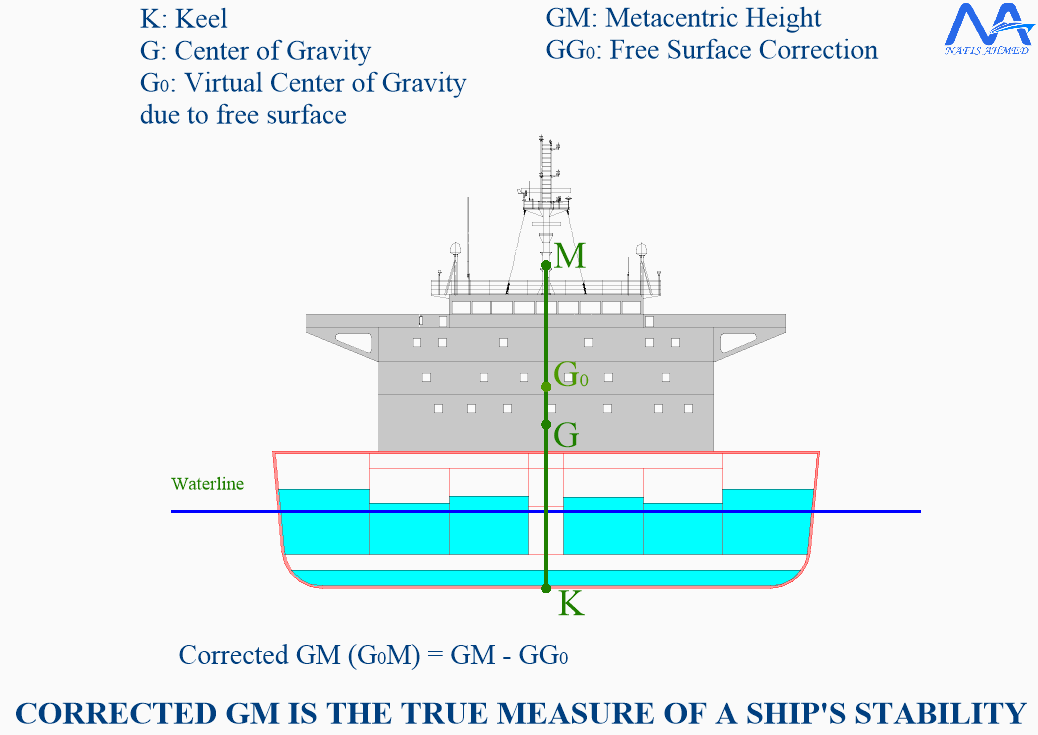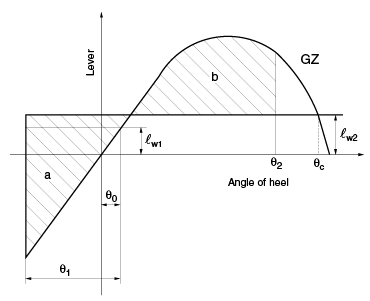A few days ago, I was checking a voyage condition of a heavy transport vessel. The ship was carrying two heavy cargoes of total weights around 11,000 tonnes. Their vertical center of gravity (VCG) was almost 18 meters above the deck. On paper, everything looked fine. The condition met the IMO intact stability criteria 2.2 (Criteria regarding righting lever curve) and 2.3 (weather criterion). It also satisfied the longitudinal strength limits for shear force and bending moment. Yet, something did not feel right. Despite meeting all the criteria, the vessel was not truly safe. The problem was in the limit intact condition, a factor that is often ignored but can silently decide the fate of a voyage. What the Limit Intact Really Tells Us The limit intact condition is more than just a number in the loading program. After applying the free surface correction, the corrected GM must be equal to or greater than the minimum GM required at that voyage draft. That minimum GM value isn’t a guess, it’s clearly stated in the vessel’s Trim and Stability Booklet for every possible draft. Crucially, the Limit Intact GM is a calculation derived specifically for your ship; it is not a generic global rule like the IMO criteria. It is derived from inclining experiment data, hull form characteristics, and verified hydrostatic calculations. It defines the lowest GM that ensures the righting arm curve has enough area under it to counter heeling influences such as wind pressure, waves, and minor cargo shifts. In heavy-transportations, cargo with high VCG significantly raises the total KG. Even a 1-meter increase in KG can reduce GM by the same amount, causing a major loss of righting ability. The limit intact GM ensures the vessel still retains adequate restoring energy under all allowable drafts. If the corrected GM after free surface correction is below this limit, the ship’s stability margin is gone. That condition means even the vessel meets IMO 2.2 and 2.3 criteria, it does not have the energy reserve to resist a sudden heeling moment at sea. This is why limit intact is not just an internal check. It is a dynamic safety threshold that reflects the true operational stability of a vessel, especially during long sea voyages. Why the Voyage Wasn’t Safe At first glance, meeting IMO stability requirements might seem enough. But those criteria only define the minimum acceptable range, like a general highway speed limit. True safety depends on how far your vessel stays from the lower limit of safety, called the Limit Intact GM, which acts as a vessel-specific, non-negotiable floor for operational stability. In this case, the high cargo VCG raised the vessel’s total KG. Since GM equals KM minus KG, an increase in KG naturally reduced GM. The corrected GM still met IMO limits but dropped below the vessel’s limit intact GM. That means the vessel had lost its operational safety margin. When GM becomes small, the righting arm curve flattens. The initial slope of the GZ curve represents GM itself, so any reduction directly affects the restoring ability of the ship. The smaller righting arm results in a slower roll response. A ship with marginal GM tends to have a long roll period and sluggish recovery. In heavy seas, this can cause excessive rolling or even synchronous rolling with waves. The vessel may reach larger angles of heel, increasing the risk of deck immersion or loss of cargo integrity. These effects are not visible in static stability checks (IMO Code on Intact Stability, 2008 Edition). In other words, the ship was “stable” on paper but unsafe in practice. The safety margin had vanished. A small wave or wind gust could have pushed it beyond recovery. How to Bring the Condition Back to Safety Once the corrected GM drops below the limit intact value, the first goal is to reduce the vessel’s overall KG. The simplest method is ballasting lower tanks. Adding weight low in the hull reduces KG and increases GM, restoring a safer stability margin. The next critical point is to avoid partial fillings in ballast tanks. A partially filled tank produces a free surface moment which acts as if a weight is lifted upward, effectively raising the vessel’s center of gravity. This virtual rise can sometimes reduce GM by several centimeters per tank. Keeping tanks fully filled or completely empty reduces this negative effect and helps recover GM. Cargo arrangement also matters. Heavier cargoes should be positioned closer to the baseline or deck level, ideally near the vessel’s centerline. Even a small reduction in the cargo’s vertical location can produce a measurable improvement in GM. Shifting 11,000 tonnes downward by half a meter can increase GM by several centimeters, enough to regain compliance with the limit intact condition. If trimming slightly by the stern improves the KM value, it can also help. However, this adjustment must be verified through hydrostatic data to ensure that structural stress limits remain within safe margins. In practice, achieving a corrected GM at least 10–15 percent above the minimum required limit provides a practical safety margin. This accounts for minor calculation errors, cargo deflection, or tank volume uncertainty. Where It Actually Applies The Limit Intact condition applies only to the seagoing or voyage condition. That is when the vessel is fully loaded, secured, and ready for open sea. This is the moment when theory meets reality. This issue often appears in heavy marine transport and offshore installation vessels. These ships frequently carry large deck modules or structures with very high VCGs. The overall KG can increase by more than one meter compared to ballast-only conditions. During voyage preparation, the voyage condition may seem stable at first glance. But when the free surface correction is applied, the corrected GM can fall below the minimum limit. This typically happens when multiple ballast tanks are in a partially filled condition during the voyage. For instance, a 220-meter heavy transport ship carrying an 11,000-tonne offshore module at an 18 m VCG may show an
Rock the Boat, Not the Rules – Understanding IMO Stability Criteria
If you’ve ever watched a ship tilt in the waves and then gracefully straighten itself, you’ve witnessed marine stability in action. It might look effortless, but behind that movement is a world of calculation, engineering, and international regulations.
At the heart of it all is something called IMO Stability Criteria — a global set of rules designed to make sure ships don’t just float, but stay upright in real conditions……..


